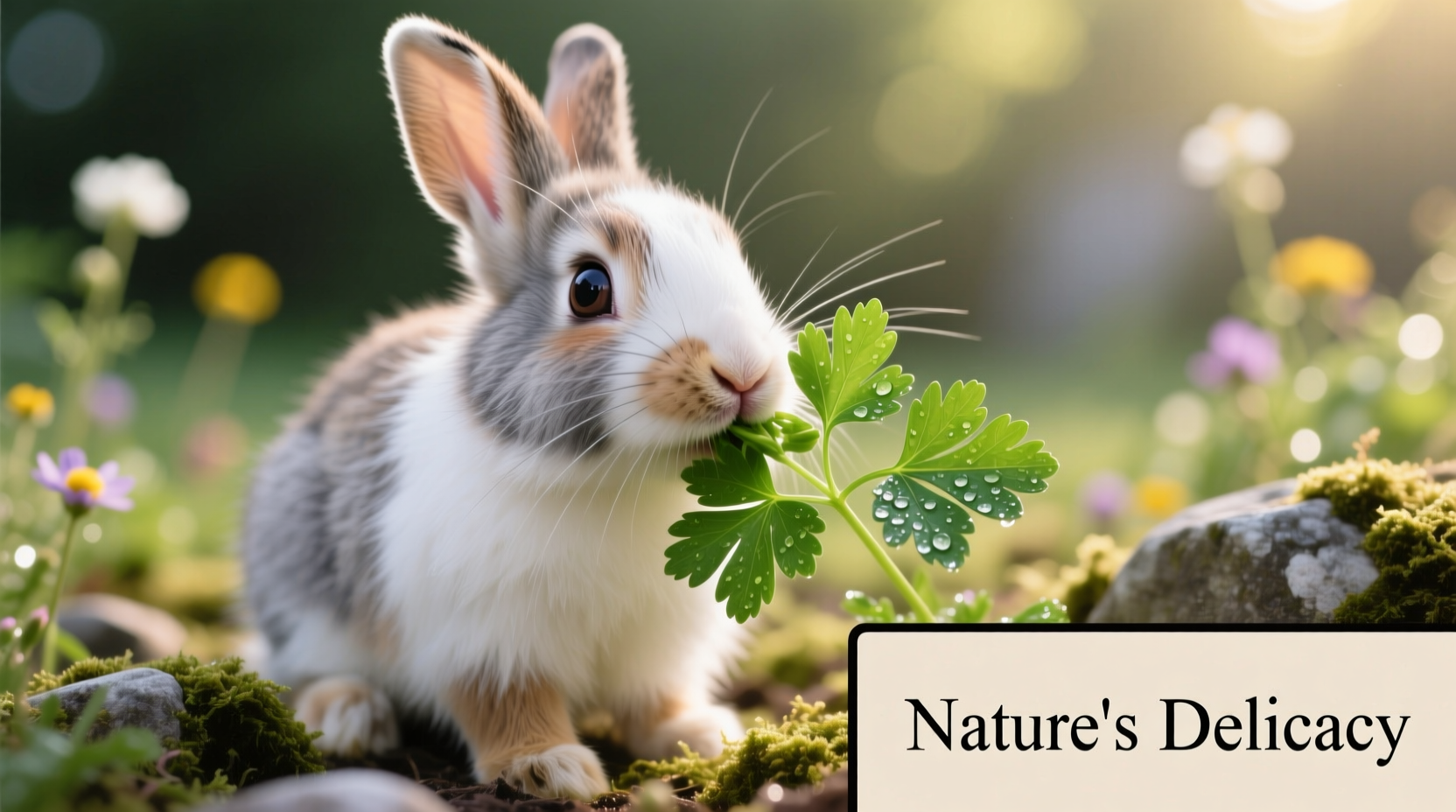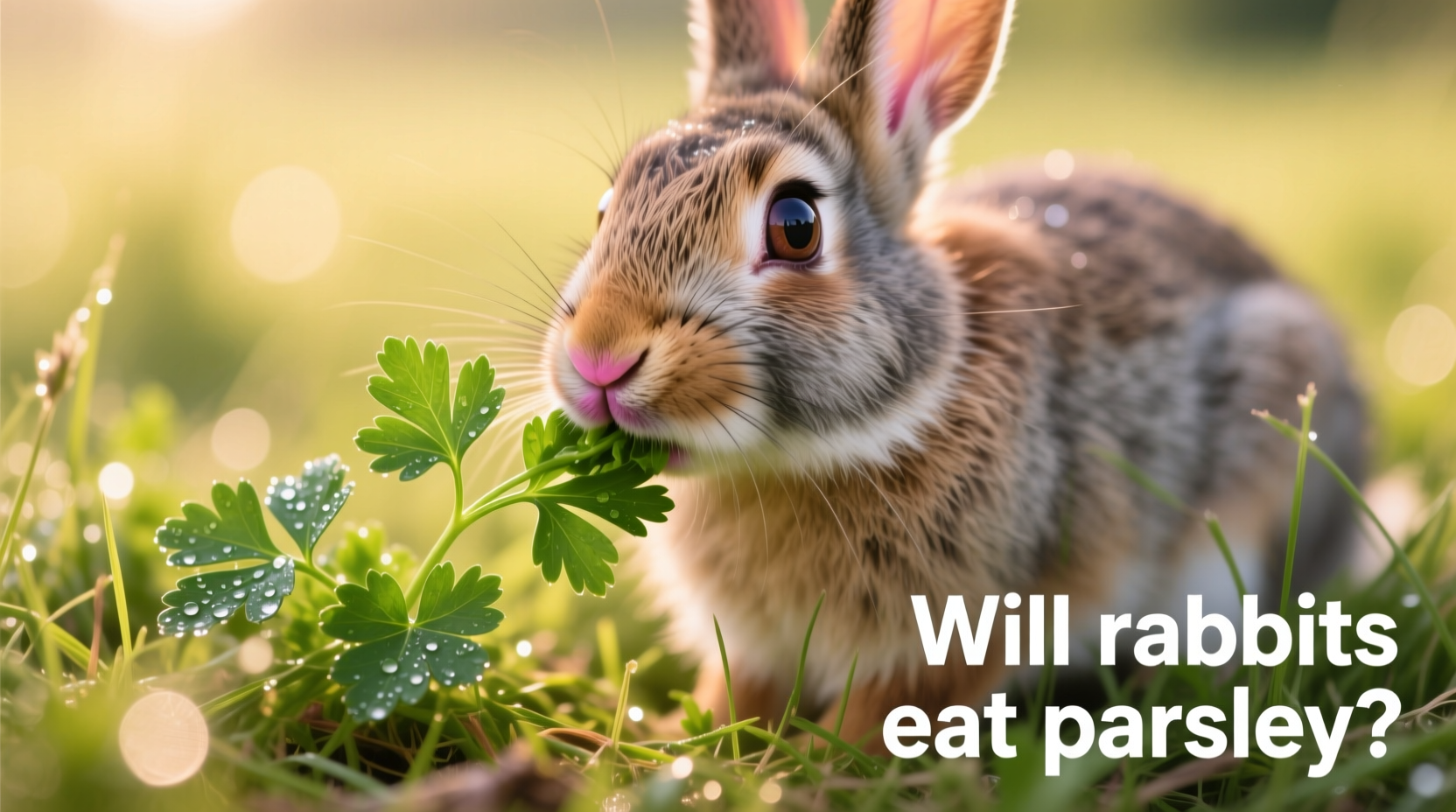Many rabbit owners wonder whether this common kitchen herb is safe for their furry companions. The answer is yes—rabbits not only enjoy parsley but can benefit from its nutritional profile when offered appropriately. Understanding the proper way to incorporate parsley into your rabbit's diet ensures you're providing safe, healthy treats that support their wellbeing.
Why Rabbits Love Parsley (And Why You Should Care)
Rabbits are naturally drawn to parsley's fresh, aromatic leaves. This isn't just preference—it's biology. Their sensitive noses detect the volatile oils that give parsley its distinctive scent, triggering their foraging instincts. When you offer parsley correctly, you're not just providing nutrition; you're enriching your rabbit's environment through natural foraging behavior.
Rabbit Nutrition Fundamentals Before Adding Parsley
Before introducing any new food, understand your rabbit's basic dietary needs:
- 80% of diet should be unlimited grass hay (timothy, orchard, meadow)
- 15% should be fresh leafy greens and vegetables
- 5% can be high-fiber pellets
- Treats like parsley should be occasional additions, not staples
Rabbits have sensitive digestive systems evolved for high-fiber, low-calorie foods. Sudden dietary changes can cause serious gastrointestinal issues, so any new food—including parsley—must be introduced gradually.
Nutritional Benefits of Parsley for Rabbits
Parsley packs a nutritional punch that benefits rabbits when fed in appropriate amounts:
- Vitamin A: Essential for vision, immune function, and skin health
- Vitamin C: Supports immune system (rabbits produce their own but additional sources help)
- Vitamin K: Important for blood clotting and bone metabolism
- Fiber: Supports healthy digestion and dental wear
- Antioxidants: Help combat cellular damage
According to research from the House Rabbit Society, leafy greens like parsley provide crucial variety in a rabbit's diet, preventing boredom while delivering essential micronutrients that hay alone cannot provide.
| Nutrient | Amount per 100g Parsley | Benefit for Rabbits |
|---|---|---|
| Vitamin A | 8424 IU | Supports vision and immune function |
| Vitamin C | 133 mg | Antioxidant properties, immune support |
| Calcium | 138 mg | Necessary but problematic in excess |
| Fiber | 3.3 g | Promotes healthy digestion |
Safe Parsley Feeding Guidelines You Need to Know
While rabbits will eagerly eat parsley, proper portion control is essential. The University of California Veterinary Medical Teaching Hospital recommends:
- Adult rabbits: 1-2 sprigs (about 1 tablespoon chopped) 2-3 times weekly
- Dwarf breeds: Half the amount for standard breeds
- Baby rabbits: Wait until 12 weeks old before introducing any greens
Always wash parsley thoroughly to remove pesticides. Start with a single leaf and monitor for 24 hours before increasing the amount. If your rabbit shows any signs of digestive upset (soft stools, decreased appetite), discontinue parsley immediately.
When Parsley Becomes Problematic for Rabbits
Despite its benefits, parsley has potential risks you must understand:
- High calcium content: Can contribute to urinary stones in susceptible rabbits
- Oxalates: May interfere with calcium absorption when consumed in excess
- Pesticide exposure: Non-organic parsley often contains harmful residues
- Digestive sensitivity: Some rabbits simply don't tolerate parsley well
Rabbits with a history of urinary issues should avoid parsley entirely. The Rabbit Welfare Association and Fund specifically advises against feeding parsley to rabbits with known calcium metabolism problems.
Step-by-Step: Introducing Parsley to Your Rabbit
Follow this proven method to safely add parsley to your rabbit's diet:
- Start small: Offer one small leaf (about 1/2 inch)
- Monitor closely: Check droppings and behavior for 24 hours
- Gradual increase: If no issues, increase to 1/2 sprig after 3 days
- Regular feeding: Once tolerated, offer 1-2 sprigs 2-3 times weekly
- Variety rotation: Alternate parsley with other safe greens like cilantro and romaine
Never make parsley the only green in your rabbit's diet. Variety prevents nutritional imbalances and keeps mealtime interesting for your pet.
Parsley vs. Other Greens: Making Smart Choices
Not all greens are created equal for rabbits. Understanding how parsley compares helps you make informed decisions:
- Cilantro: Lower in calcium, safer for frequent feeding
- Romaine lettuce: Higher water content, good for hydration
- Kale: Higher in calcium than parsley—use sparingly
- Carrot tops: Excellent alternative with similar nutrient profile
The American Rabbit Breeders Association recommends rotating 5-6 different greens to ensure balanced nutrition while minimizing exposure to any single potential risk factor.
Troubleshooting Common Parsley Issues
If your rabbit experiences problems after eating parsley, here's what to do:
- Soft stools: Stop all greens for 48 hours, then reintroduce with lower-calcium options
- Decreased appetite: Return to hay-only diet for 24 hours before trying alternative greens
- Urinary issues: Consult your veterinarian immediately and eliminate high-calcium greens
- Refusal to eat: Try offering parsley in different forms (whole sprig vs. chopped)
Remember that individual rabbits have unique tolerances. What works for one rabbit might not suit another, so always monitor your pet's response to new foods.

Creating a Balanced Fresh Food Plan for Your Rabbit
Parsley should be just one component of a varied fresh food rotation. Here's a sample weekly plan that incorporates parsley safely:
- Monday: Romaine lettuce + cilantro
- Tuesday: Endive + dandelion greens
- Wednesday: Parsley + carrot tops
- Thursday: Basil + radish leaves
- Friday: Arugula + mint
- Saturday: Cucumber slices + bok choy
- Sunday: Kale (sparingly) + watercress
This rotation ensures nutritional diversity while limiting exposure to high-calcium greens like parsley. The British Veterinary Association confirms that varied green rotations significantly reduce the risk of diet-related health issues in pet rabbits.











 浙公网安备
33010002000092号
浙公网安备
33010002000092号 浙B2-20120091-4
浙B2-20120091-4